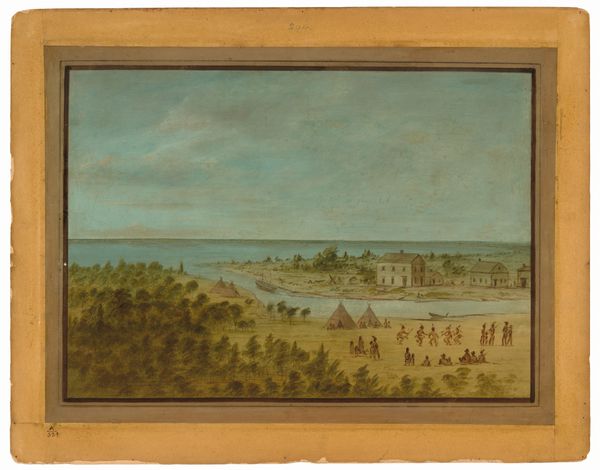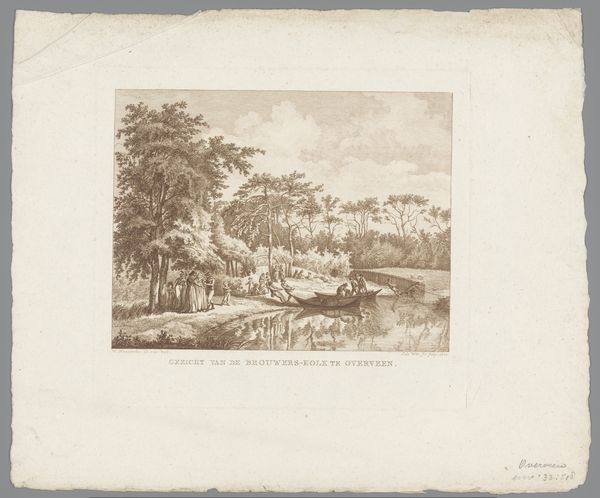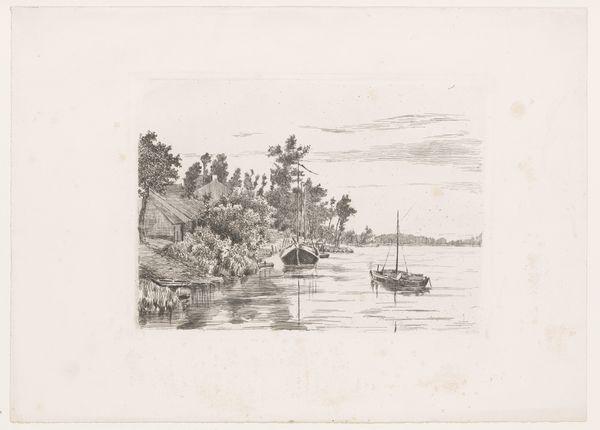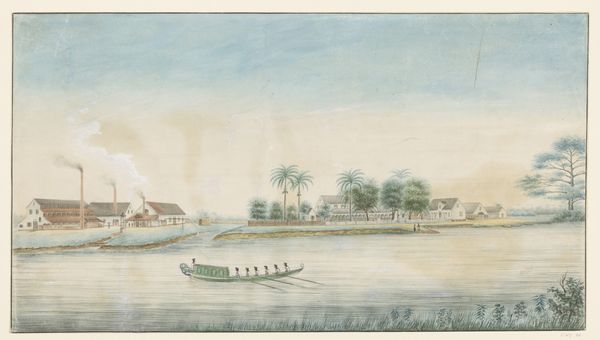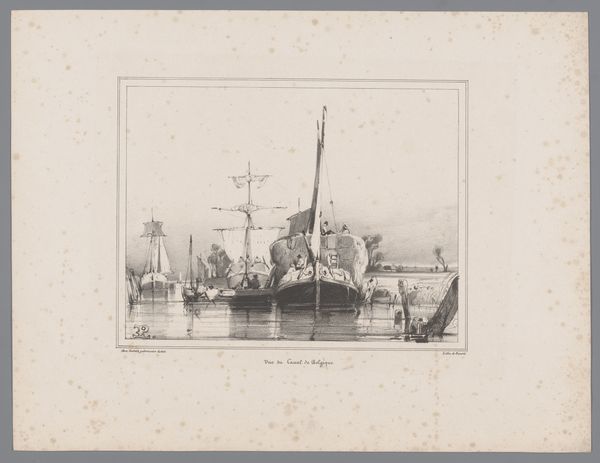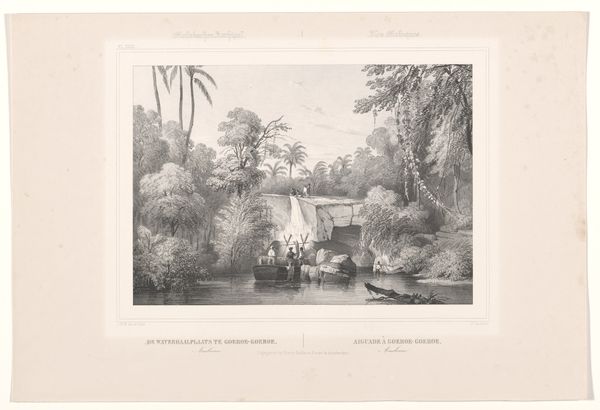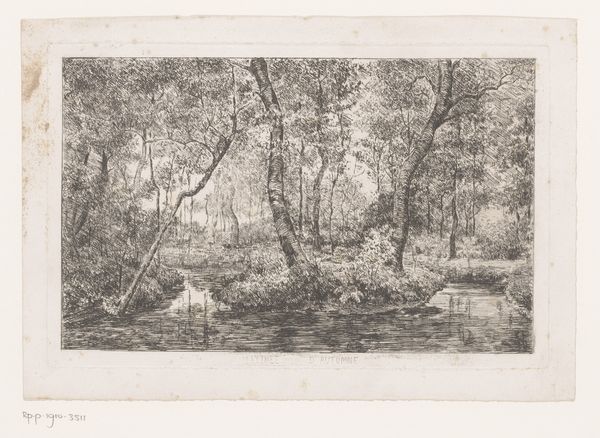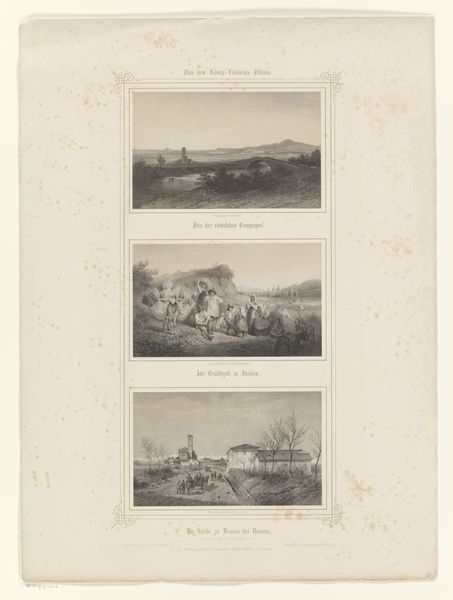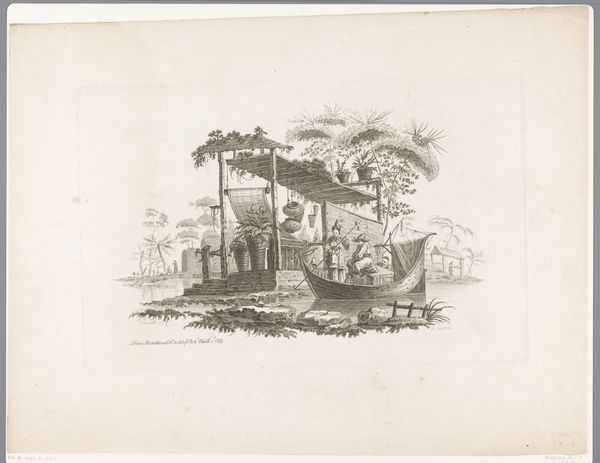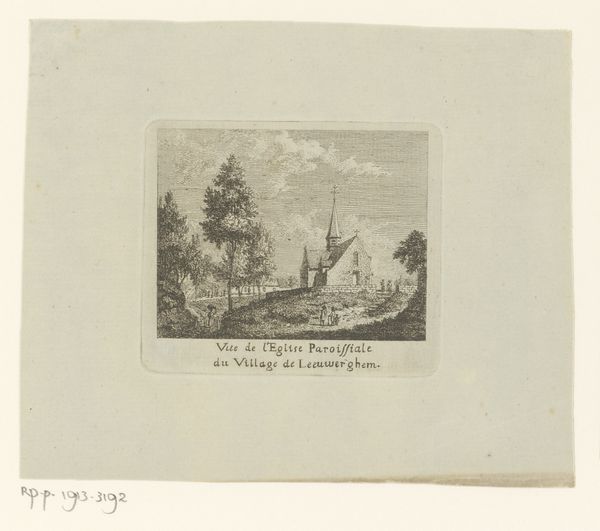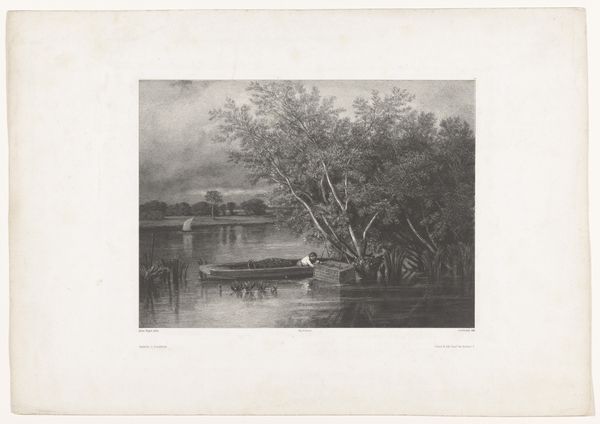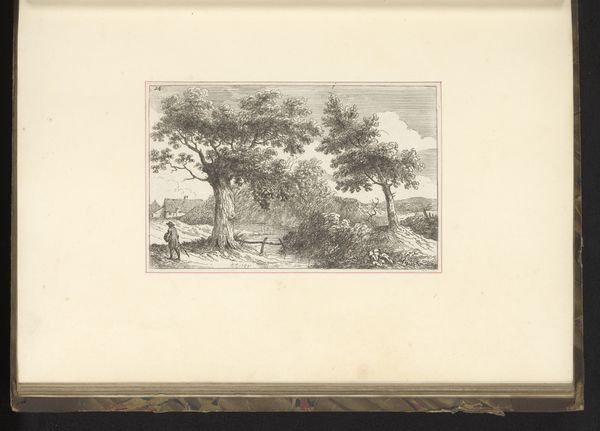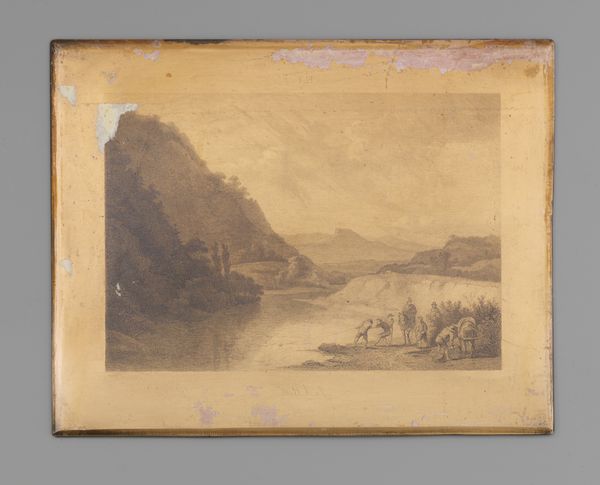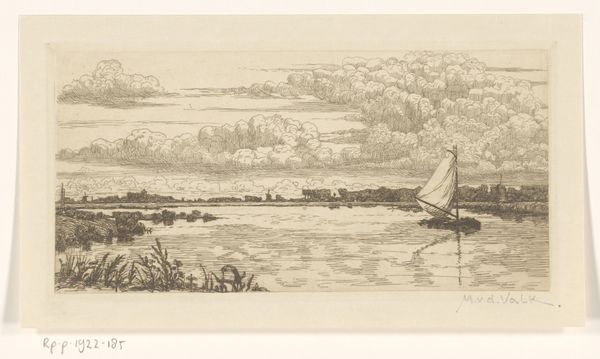
painting, gouache
#
water colours
#
narrative-art
#
painting
#
gouache
#
landscape
#
figuration
Dimensions: overall: 46.5 x 62.5 cm (18 5/16 x 24 5/8 in.)
Copyright: National Gallery of Art: CC0 1.0
Curator: What strikes you first about this watercolor piece? Editor: It's serene, yet bustling. The oval frame contains this whole little world; the colors are muted, giving it a slightly antique feel. The details within pull me in. Curator: This is "A Small Orejona Village," attributed to George Catlin and likely painted between 1854 and 1869. Consider the socio-historical context. Catlin traveled extensively documenting Native American life, but his work must be examined in relation to colonialism's effects. What's depicted here – indigenous populations, their dwellings, the presence of a boat– is mediated by Catlin's own worldview and the very act of documenting them. Editor: Yes, looking closely, I see how the composition directs my eye. The village is elevated on the rise in the middleground, with all these figures painted at a small scale that serves the impression of activity, but the figures in the front appear much larger as if to signal something specific. What's the relationship between that steamboat and the shorefront community depicted? Curator: The steamboat's introduction reveals the disruptive forces of Western expansion, doesn’t it? It's made in a very uniform style; not like the hand-made canoes along the water. That technology is so imposing, influencing trade networks, resource extraction, and the entire social structure of this Orejona community. Consider also that the work is painted using watercolors— how does the materiality influence meaning here? The use of a portable, readily available medium facilitated the rapid documentation of landscapes and inhabitants but equally distanced the artist from a deeper material connection to the people he depicted. Editor: Right. And watercolor allows for layering. Look how the green foliage blurs into a hazy distance, yet the human figures maintain crisp outlines. They aren’t idealized— just simply and clearly rendered, as figures of a populated landscape with the boats on the bank to mirror the tents on the opposite side of the slope. The eye seems to move continuously between watercraft and village, and back and forth over the frame in that pattern. Curator: Ultimately, the painting captures a specific moment of cultural intersection and tension— where one material culture begins to reshape another irrevocably. Editor: And those tensions give the artwork a compelling narrative structure and dynamic that remains captivating today, making the work resonate across both form and content.
Comments
No comments
Be the first to comment and join the conversation on the ultimate creative platform.
